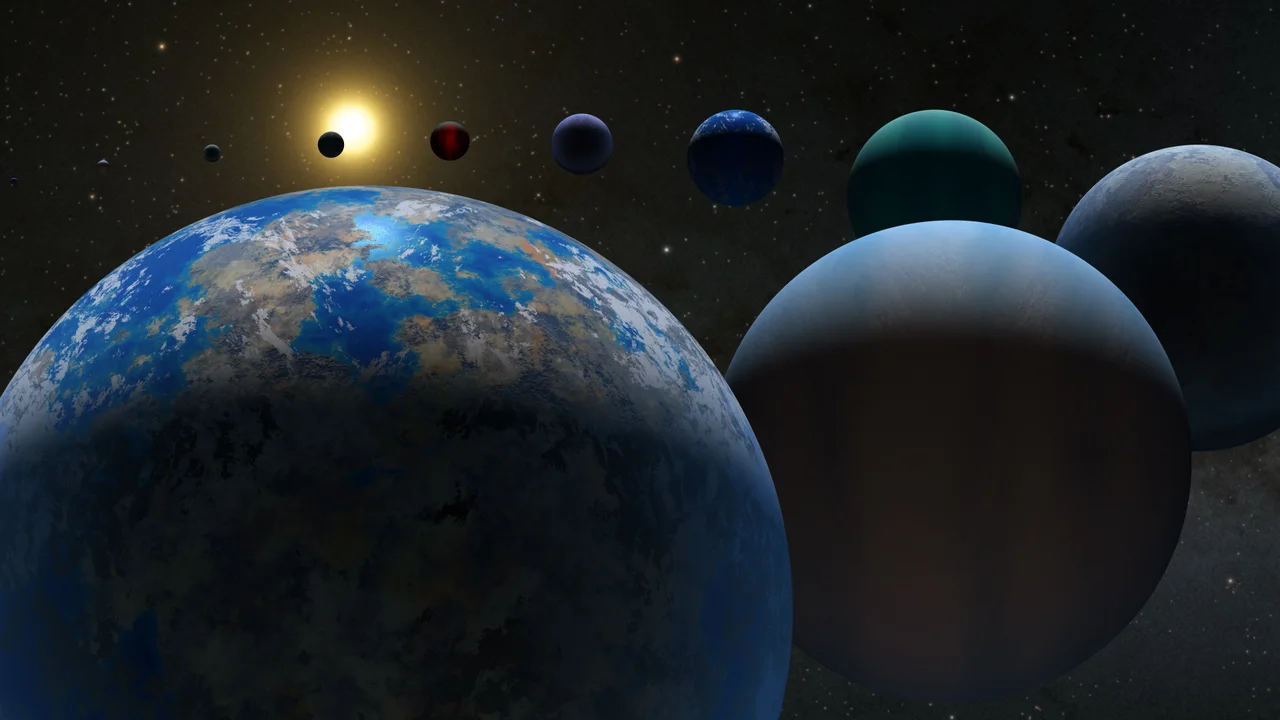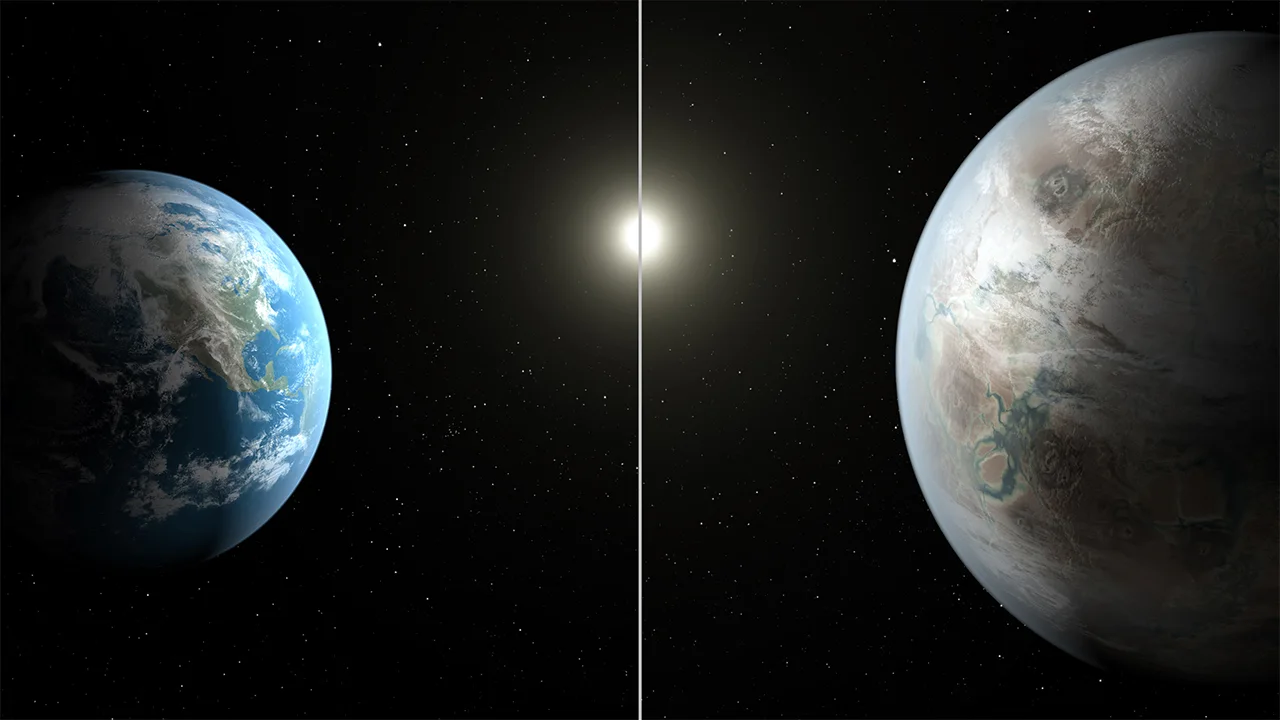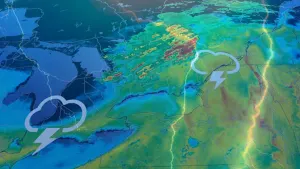
How NASA's exoplanet catalogue brings a galaxy far, far away closer to home
"There are many more planets in our galaxy we haven't found yet, as many as 100 billion to 200 billion," says NASA Planet Hunter Dr. Jessie Christiansen. "It's mind-blowing."
We've come a long way since the first exoplanet was discovered over 30 years ago. Thanks to NASA's planet-hunting Kepler Space Telescope, the roster of confirmed alien worlds just rose to over 5,000 members!
Editors note: This article was originally published on March 21, 2022. It has been updated in honour of Star Wars Day. May the 4th be with you!
"It's not just a number," Dr. Jessie Christiansen, the science lead for the NASA Exoplanet Archive at Caltech's NASA Exoplanet Science Institute, said in a press release. "Each one of them is a new world, a brand-new planet. I get excited about every one because we don't know anything about them."

This infographic breaks down the 5000+ confirmed exoplanets into their types — gas giants like Jupiter, ice giants like Neptune, terrestrial planets like Earth, and the super-Earths that we have only found outside our solar system. Credit: NASA/JPL-Caltech
Read more: Newfound exoplanet 'Proxima d' is one of the lightest ever discovered
On Monday, March 21, 2022, NASA added 65 newly confirmed worlds to its exoplanet database, bringing the total number up to 5,005.
Sixty of those exoplanets were discovered with NASA's Kepler Space Telescope during its K2 mission, four of them were spotted by NASA's Transiting Exoplanet Survey Satellite (TESS), and the last was confirmed using the European Space Agency's CHaracterising ExOPlanet Satellite (CHEOPS).
Dr. Christiansen is the lead author of a new paper that confirmed those 60 Kepler worlds. She and her colleagues sifted through hundreds of potential 'candidate' exoplanets detected by the telescope during its K2 mission and confirmed those 60 exoplanets based on their likelihood of being real.
"These planets are predominately super-Earth and sub-Neptune planets, bigger than Earth but smaller than Neptune, which means they are a mix of rocky and volatile-rich," Christiansen told Caltech News. "There are also a couple of Jupiter-sized planets and even a super-Jupiter. They all orbit their stars quickly, in less than 41 days, which means they are all quite hot!"

This view from NASA's Eyes on Exoplanets shows the newfound planetary system K2-384, with five planets orbiting closely around a small red dwarf star. The green band surrounding the star is the so-called habitable zone, where temperatures would be just right on a planet's surface to support liquid water. Mercury's orbit around our Sun is shown for reference, revealing how small the K2-384 system is. Credit: NASA
"And we have one planet system that is very similar to the famous TRAPPIST-1 system of seven rocky planets," Christiansen added. "This one has five small planets that orbit a very small, cool red dwarf called K2-384. The new batch also includes two Earth-size planets, but they are hot, about 600 Kelvin [327°C], so they are not habitable. They are hot rocks."
KEPLER AND THE K2 MISSION
The Kepler Space Telescope was launched by NASA in 2009 and initially aimed at a specific point in space near the constellation Cygnus. Maintaining a fixed view down the galactic arm that our solar system is part of, it watched for what are known as 'transits' — the brief dimming of a star's brightness due to a planet passing in front of it. Unfortunately, by 2013, Kepler had lost the ability to keep that fixed view due to problems with the wheels that held the telescope's mirror steady. However, a clever fix utilizing sunlight to stabilize the telescope allowed it to continue under a new mission, K2, up until 2018.

Superimposed on our view of the Milky Way Galaxy is the original Kepler field of view (left of centre), and 16 fields of view that the telescope searched during its K2 mission up until March 2017. K2 would go on to search two more fields, for a total of 18, before the mission ended in 2018. Credit: NASA
Before Kepler, astronomers had discovered nearly 400 exoplanets. As of now, from its original mission and K2, Kepler added more than 3,200 confirmed worlds to that list.
When evidence is first found of a planet orbiting another star, it is labelled as a 'candidate' exoplanet. A candidate graduates to become a 'confirmed' exoplanet after it is verified, either by observing it with another telescope or using statistics and modelling to show that it's far more likely to exist than to be an error in the data.
There are over 3,100 candidates, just from Kepler's missions, still waiting to be confirmed.
Kepler isn't the only planet hunter, though. Since 2018, TESS has added over 5,000 more transit detections, and just over 200 exoplanets have been confirmed from that data. Meanwhile, ground-based telescopes search for alien worlds in other ways, such as the radial velocity method, where they look for stars that 'wobble' as planets orbit around them. They also use the microlensing method, by watching how a star's light is warped by the gravity of their planets. In some cases, astronomers can even directly observe exoplanets as they orbit their stars.
HOW MANY ALIEN PLANETS ARE OUT THERE?
"The interesting thing about these planets is that they are mostly in this little bubble around our solar system, where they are easier to find," Christiansen explained in the Caltech news release. "Of the 5,000 exoplanets known, 4,900 are located within a few thousand light-years of us."
"And think about the fact that we're 30,000 light-years from the center of the galaxy," she added, "if you extrapolate from the little bubble around us, that means there are many more planets in our galaxy we haven't found yet, as many as 100 billion to 200 billion. It's mind-blowing."
SOUND ON!: Listen to the music of discovering 5,000+ exoplanets over 30 years
William Borucki is the astronomer who came up with the idea of using a space-based telescope to look for planetary transits. He would eventually become the principal investigator of the Kepler mission.
"I get a real feeling of satisfaction, and really of awe at what's out there," Borduki told NASA. "None of us expected this enormous variety of planetary systems and stars. It's just amazing."
A GALAXY FAR, FAR AWAY IS GETTING A LOT CLOSER
It's difficult to explore these exoplanet discoveries without thinking about the science fiction that came before we even knew they existed.
Star Wars is one of the most popular science fiction stories of all time. However, when George Lucas first introduced us to his vision of a galaxy far, far away, the only planets we knew about were in our solar system.
After finding more than 5,000 alien worlds, there are actually planets out there that may have been plucked straight from George Lucas' imagination. Some invoke the flavour of Star Wars so much that they have earned nicknames based on their fictional counterparts.
"Coruscant"
In the Star Wars Universe, Coruscant is the capital planet of both the Republic and the Empire. It is an ancient world whose surface is completely covered in layer upon layer of urban sprawl. The only natural part of the planet's surface still visible is the peak of its tallest mountain, Umete, which pokes up above the surface of the planet-wide city.
To get a sense of scale for such a city, the peak of Mount Everest is just shy of 9 kilometres above sea level. On the other hand, the ocean's deepest point is over 10 kilometres below sea level. So, a uniform urban surface similar to Coruscant, here on Earth, would represent between 9 and 20 kilometres of city layers stacked upon one another!
Roughly 1,800 light years away from Earth, Kepler-452b is a 'super-Earth' exoplanet orbiting a star similar to our Sun but substantially older.

This artistic concept compares Earth (left) to the new planet, called Kepler-452b, which is about 60 percent larger. The illustration represents one possible appearance for Kepler-452b -- scientists do not know whether the planet has oceans and continents like Earth. Credit: NASA/Ames/JPL-Caltech/T. Pyle
According to NASA: "Kepler-452b belongs to a star system 1.5 billion years older than Earth's. That would give any technologically adept species more than a billion-year jump ahead of us. The denizens of Coruscant not only have an entirely engineered planetary surface, but an engineered climate as well. On Kepler-452b, conditions are growing markedly warmer as its star's energy output increases, a symptom of advanced age. If this planet, 1.6 times the size of Earth, were truly Earth-like, and if technological life forms were present, some climate engineering might be needed there as well."
"Kamino"
Seen in Attack of the Clones, as well as The Clone Wars and The Bad Batch animated series, Kamino is a planet completely covered in oceans, with titanic waves and storms sweeping the surface.
Among the exoplanets catalogued so far, a few could match this water world. One such discovery is Kepler-22b.

Kepler-22b, at 2.4 times Earth's radius and orbiting within its star's habitable zone, could be a water-covered planet. Credit: NASA Ames/JPL-Caltech
From their research, planetary scientists have found that the difference between Earth and a water world like Kamino likely comes down to mass. Earth's oceans exist because enough atmosphere is retained by the planet's gravity that atmospheric pressures at the surface cause water vapour to condense out of the air.
A planet with more mass would have stronger gravity, which would result in a thicker atmosphere with higher atmospheric pressures. With enough water vapour in its atmosphere, a sufficient amount could condense to completely cover the surface with a global ocean.
The debate, at the moment, is just how much mass is required. Kepler-22b could be an ocean world, or it may have enough mass to be gaseous like Neptune.
"Tatooine"
The desert planet of Tatooine, where Luke Skywalker grew up, orbits twin binary stars — Tatoo I and Tatoo II. For a while, astronomers wondered if such a combination could exist in real life. Some planets have been found in binary star systems where the stars orbit each other far apart — far enough that there are stable areas around each of the stars where a planet could settle in.
Close binaries, where two stars circle each other at close range, can create a complex, harsh environment for planets to form in.
Still, in 2011, NASA found Kepler-16b, the first circumbinary exoplanet.

The Kepler-16 binary star system would produce a double sunset similar to the one on Luke's homeworld of Tatooine. Credit: NASA/JPL-Caltech/T. Pyle
Kepler-16b orbits a star smaller than the Sun and is outside that star's habitable zone, so it is likely too cold to be able to support life. Also, at around one-third the mass of Jupiter, it is much too large to be a rocky world like Tatooine.
According to NASA, though: "When the discovery was announced in 2011, Bill Borucki, the now-retired NASA principal investigator for Kepler at Ames Research Center, Moffett Field, California, said finding the new planet might actually broaden the prospects for life in our galaxy. About half of all stars belong to binary systems, so the fact that planets form around these, as well as around single stars, can only increase the odds."
Want to see more like these? Check out NASA's article "Meet 8 Star Wars planets in our own galaxy", and explore NASA's Exoplanet Catalog.
Of course, the one thing missing here is the alien life that is so abundant in Star Wars. So far, we haven't found any signs of life beyond Earth — not even on the planets and moons in our own solar system.
However, the James Webb Space Telescope is now in the final stages of deployment. Using this telescope — the most powerful ever launched into space — astronomers plan to focus on some of these exoplanets to read the mix of gases that make up their atmospheres.

This artist impression shows the James Webb Space Telescope out in space at Lagrange Point 2. Credit: NASA's Goddard Space Flight Center
From their work, they may discover the unmistakable signs of habitable environments similar to Earth. In addition, they could find biomarkers that indicate life (such as methane). They may even spot the chemical signatures of gases that could only be produced by technologically advanced aliens. Such a discovery might be one of the most important leaps from science fiction to science fact we'll ever make!
May the Fourth Be With You!










